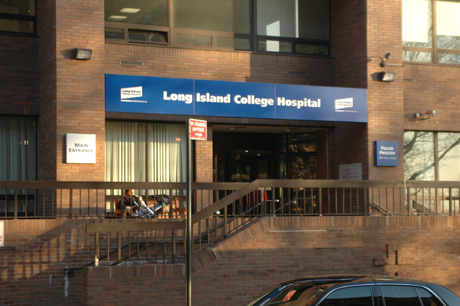Dead LICH could net SUNY $100 million

LICH_B_at_339 Hicks_Street_Entrace_001.jpg
The liquidation of Long Island College Hospital, which is threatened with “imminent” closure, could be reap riches for its owners.
A LICH insider told the Brooklyn Eagle that the Cobble Hill hospital was worth “more dead and alive” because of its valuable real estate holdings.
“There is no question that this would be a very valuable asset, and could likely fetch over 100 million dollars in a sale,” Timothy King, Managing Partner of Real Estate Services for CPEX, told the Brooklyn Eagle on Thursday, providing a quick and dirty property estimate.